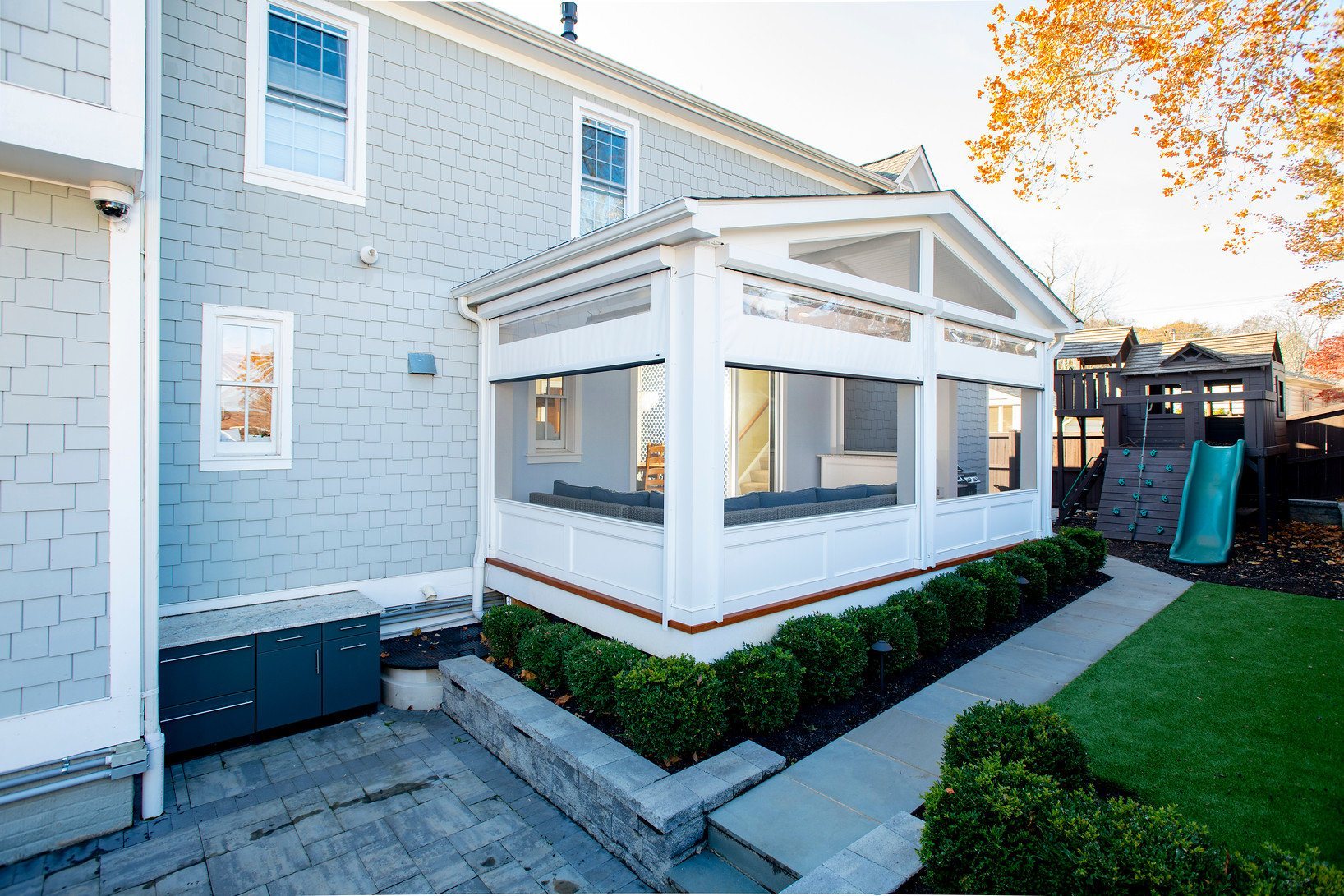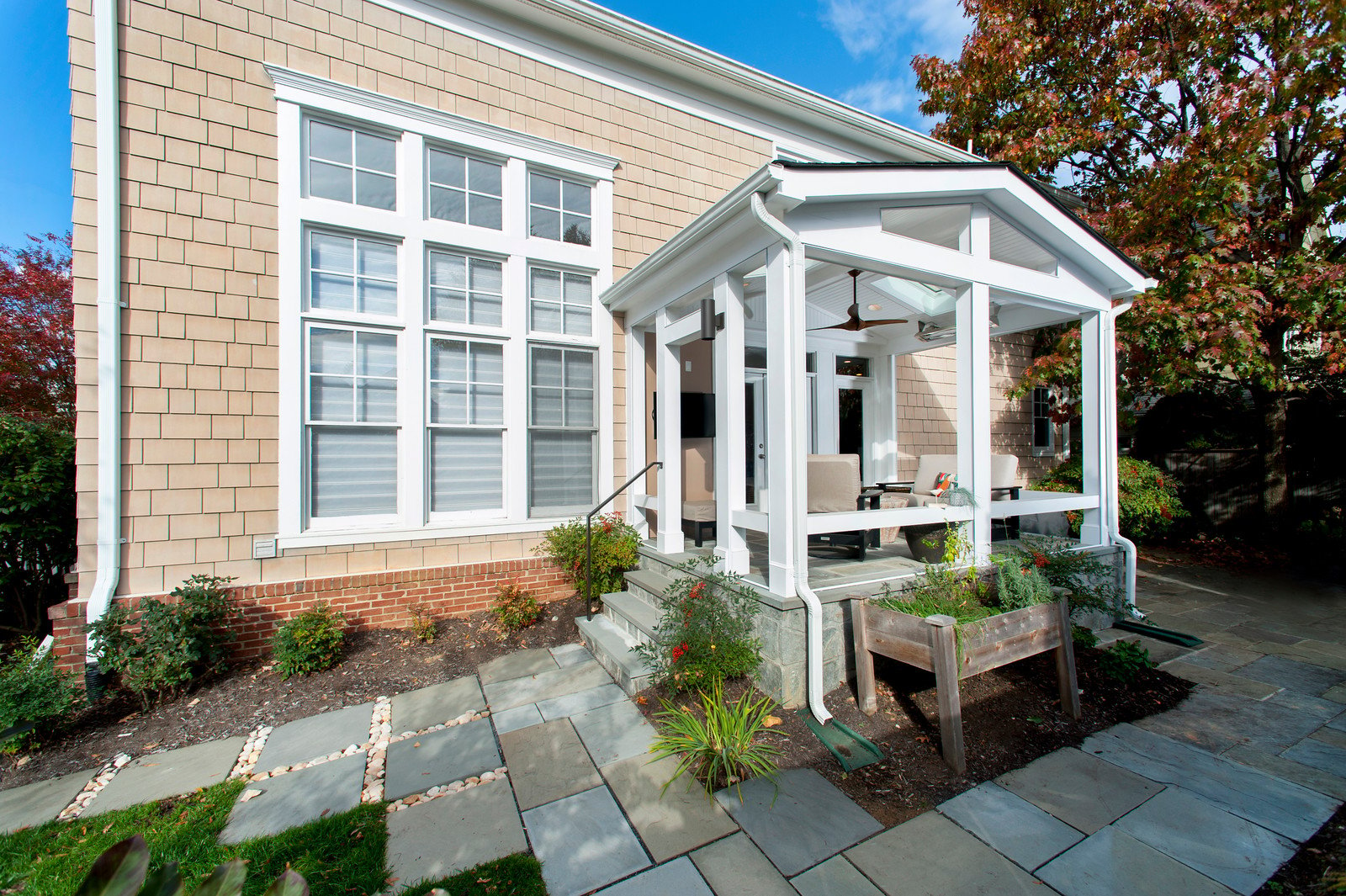What is the cost difference between a gable roof and a shed roof for a screened-in porch?
One of the biggest considerations for aspiring screen room owners is the roof they want to construct. While size, materials, and aesthetics will ultimately influence their final cost, one can expect to pay at least $12,000 for a standard porch roof.
For screened porches, there are essentially two types of roofs to choose from: gable and shed. While the latter is generally 10% to 15% cheaper, an analysis of both options' pros and cons clearly shows one is superior to the other.
Gable is more able
Gable roofs
When you think of a roof, chances are the first image that pops into your mind is a gable roof. This is the common inverted “V” roof that you tend to see everywhere. Technically, the “gable” portion is the triangular part of the wall that is formed between the edges of a roof that is dual-pitched. This type of roof comes to a point at the top and slopes down on both sides.
Gable roofs require a central ridge beam for support as well as multiple gutters and downspouts. However, they tend to feel more spacious than rooms with shed roofs because the ceiling inside is most often flat and relatively high. This feature also renders them more practical: leaves and other natural obstructions do not build up quickly while rainwater is channeled elsewhere by integrated drainage measures.

Shed roofs
This roofing variety is characterized by a single plane with a gentle slope. To maximize the amount of vertical space in a screened-in porch's interior, the ceiling mimics this sloping pattern such that one area of the room feels more spacious without feeling small.
While it is possible to build a freestanding shed roof, this is not advised as most designs end up requiring the support of their host homes. They also tend to require semi-frequent attention in areas with heavy debris because leaves, branches, and other objects easily accumulate on their typically minimal slopes. Snow can cause damage for the same reason if accumulation is left unchecked as the weight of packed snow can ultimately damage a shed roof's integrity if designed improperly.
Another factor to consider about shed roofs is that they can block the amount of sunlight entering your house. This can cause some rooms to feel darker and therefore smaller.
Is there a case for shed roofs? Or do gable roofs reign supreme?
Honestly, it depends on the situation. Objectively, gable roofs are stronger, more versatile (design-wise), and more low-maintenance. They are the optimal choice for most homeowners looking to create an outdoor space as functional as it is aesthetically pleasing. That said, some homes lend themselves to a shed roof addition, as in the picture above. Continuity is crucial to the visual success of a home addition, and many elevated screen rooms for example look better with shed roofs as part of a home's design.
For homeowners working on a tighter budget, a $1,000 to $1,500 'discount' can be significant if a roof is to hypothetically cost $10,000. However, this cost difference is equally important for homeowners looking to build a superior product. Gable roofs require additional funds to pay for the greater number of rafters, shingles, and drainage elements not present in single-sloped roofs as well as the ridge beam that supports them.
Shed roofs are not 'bad' or something to shy away from. Ultimately, a homeowner should work with a contractor to determine the proper direction for his or her project. If you are building a screen room and are unsure of which option to choose, ask yourself: what type of feel do I want to achieve? Will I perform the regular upkeep needed to preserve a shed roof? Which roof will work better with my home's existing aesthetic? Go with your gut, but make sure your wallet can follow suit.



